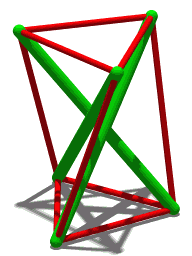nP - situation of interest .
nP indicates a "NEME" in the nemetic code.NEME is an observable and therefore measurable quanta of information or energy. There are three flavors of Nemes: A Physical Neme, coded as physNeme or pNP. A cognitive Neme coded as cNP. An emotional NEME, coded as eNp. The non human world can be described with cNp. It is the human world that includes the emoNeme ( eNp ) and the cogNeme ( cNp ). The presence of emotion and cognition is the reason human problems are always wicked. It is impossible to predict how someone will respond to a change in the environment. Every change in the environment sensitively affects how another person will respond. It is similarly impossible to predict how the other person responds. A "wicked problem" is unavoidable.
Glossary
nX indicates an exchange of nemes.
Glossary
nX indicates an exchange of nemes.
The sender's message only has value if someone responds to that message. thus exchanges.
nSt indicates nSting a pattern of nemetic exchanges.
nSt indicates nSting a pattern of nemetic exchanges.
Our facebook thread is a perfect example of persistent exchanges.
nTu indicates nTube the entwining of nStrings.
nTu indicates nTube the entwining of nStrings.
There have been many exchanges btwn the participants at the thread. Each one person to one person exchanges form a string. An nTu emerges when two nSt start to overlap. Over time more nSt are created with more people exchanging. Once an nTu starts to form it takes the friction out of Exchange. As the friction is removed Intent emerges. Once common Intent forms, a project can begin.
nPlx indicates a nemiPlex which is essentially the same as an "assemblage"
As nTu increase a nPx is the site of complexity. The nPlx is the space in which individual parts in a nStr can be combined to create a new Neme. The new Neme can result in a feedback loop. The more Nemes emitted, the more nStrings will emerge, the more NTubes will form the more nPlx will emerge the more Nemes will be emitted.
Notation
Notation
Let @ indicate that one nPlx ( nemiPlex) is nested inside another.
That allows us to say
nP @nPlx1 @nPlx2 @nPlx3 @nPlx4 @nPlx5. . .@ nPlxn.
nSt = ( Summation of nP1 ...nPn ) anTu = ( Summation of nPlx 1...n )bA power function indicates the presence of a Complex Adaptive System.
nPlx = ( Summation of nTu1. . .n)c

